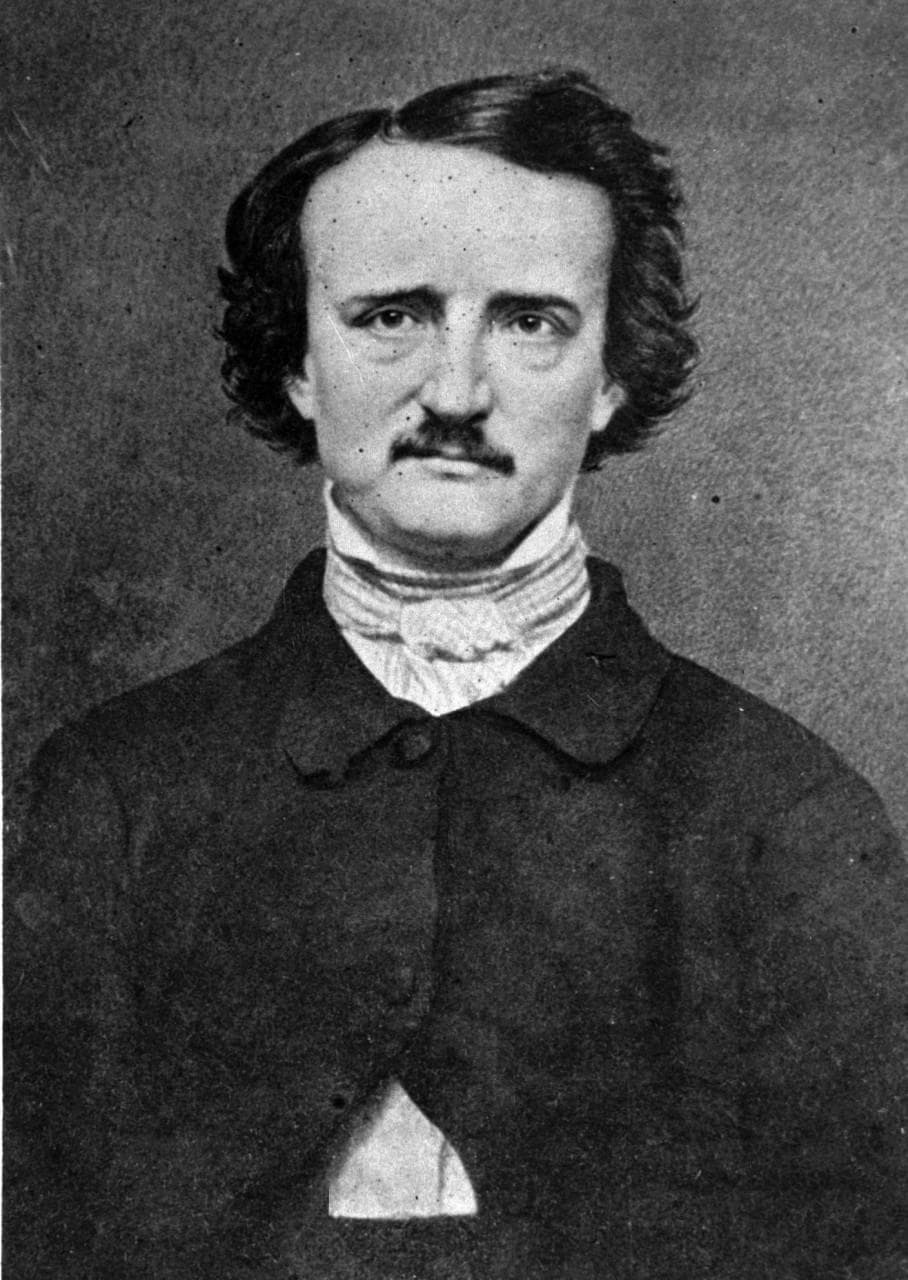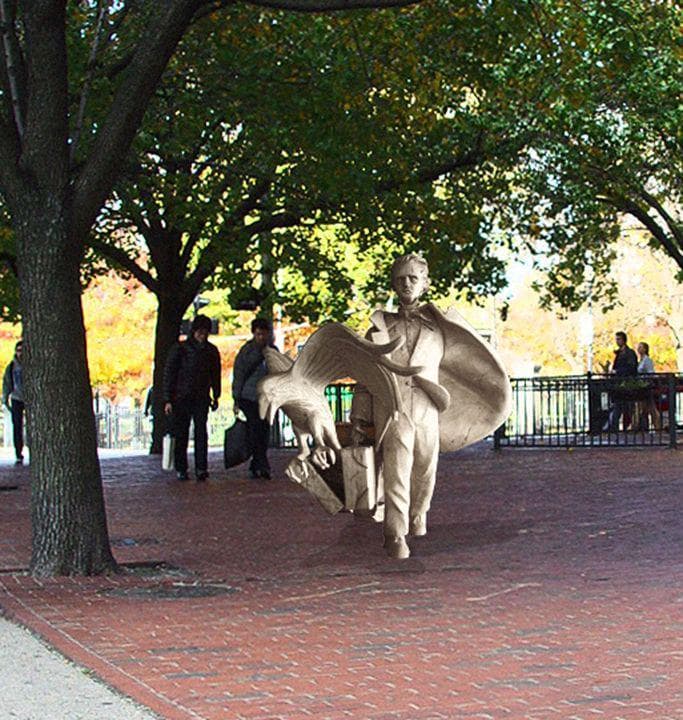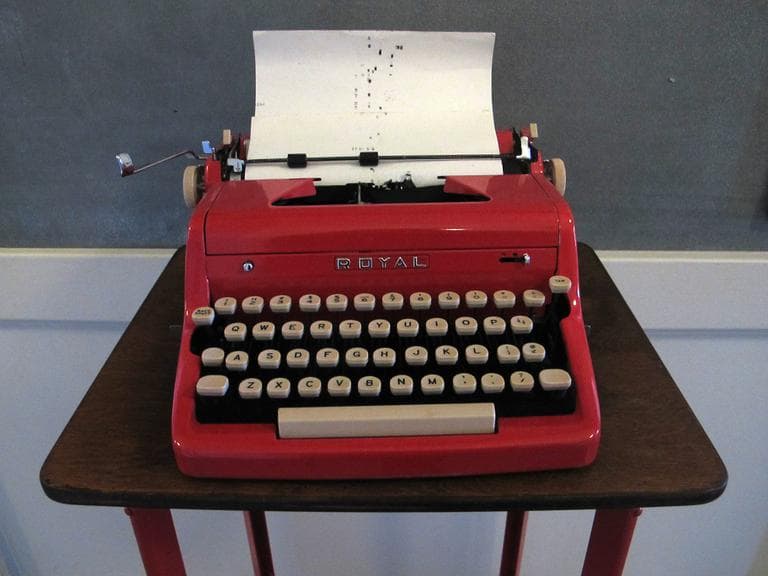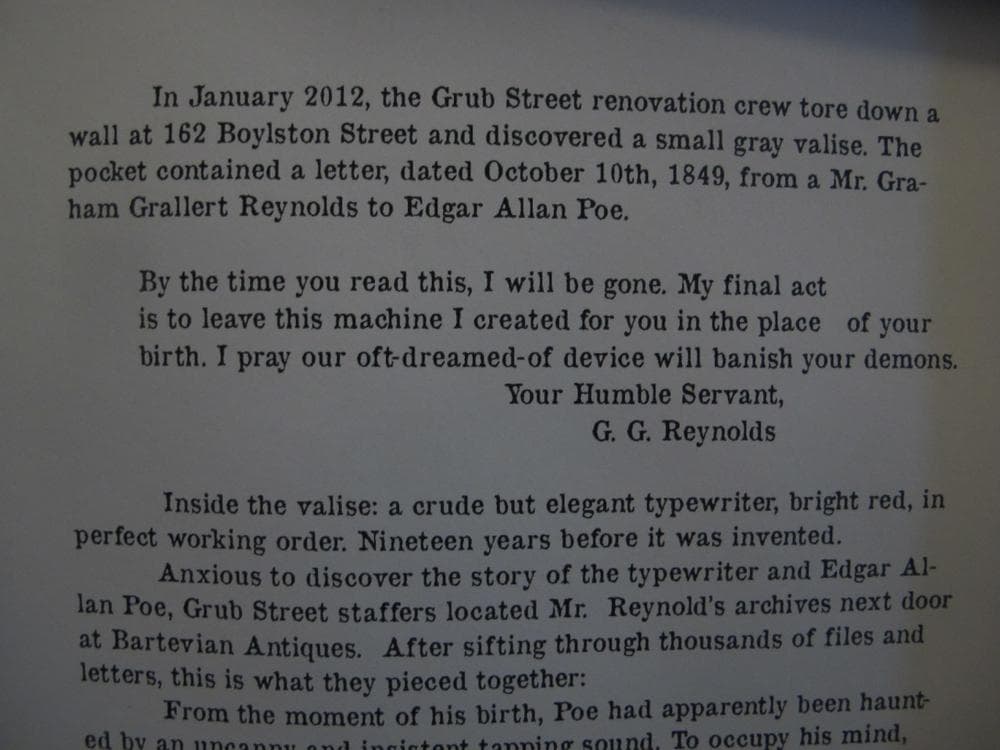Advertisement
City Creeps Closer To Honoring Poe's Boston Roots
“Once upon a midnight dreary, while I pondered, weak and weary, over many a quaint and curious volume of forgotten lore…”
Many of us are familiar with the famous first lines from Victorian horror master Edgar Allan Poe’s spooky poem, “The Raven.” But you may or may not know that Poe was a Boston boy.
Since it's Halloween, we’ve got an update on the ongoing campaign to immortalize the dark writer’s roots in bronze.

Poe has a lot of fans. "The Raven’s" fantastic terrors made it to the venerable writing chambers that beget "The Simpsons," with Lisa, Bart, Homer and actor James Earl Jones all playing their part.
And musician Lou Reed, who passed away this past Sunday, recorded his own interpretation of the creepy poem on a 2003 album simply titled "The Raven."
But even with his popularity, plenty of people have no idea the Gothic master was born in Boston — like resident Lindy Kendrick.
“He was really born in Boston? Oh, I didn’t know that!” she said, standing on the corner of Boylston and Charles streets, across from Boston Common. Laughing, she added, “I learned something this afternoon. Thank you! I’ll go back to the office and say, ‘Guess what!?’ "
Paul Lewis, chair of the Poe Foundation in Boston and a major champion of the author, has said “Guess what!?” about Poe’s origins for years.
“At this point we’ve raised about three-fourths of the total amount that we need to fabricate the [Poe] statue and install it,” he said this week.
The price tag is $200,000, according to Lewis, who is also a Boston College English professor. Since taking on the role of Poe champion he’s gotten used to wondering, fearing, doubting, dreaming and entreating the public and the city to embrace the writer’s roots. Poe published his first and last works in Boston, along with "The Tell-Tale Heart" in 1843.

“Most people know the Poe who wrote horror stories — and at this time of the year that’s even appropriate — but actually in his own day Poe was at least as well-known as a literary critic and a book reviewer,” Lewis said. “He was called 'the Tomahawk man.' ”
Poe earned the nickname because he aimed cutting criticisms at other writers, including Henry Wadsworth Longfellow.
“He was very critical of the puffery,” Lewis said. “He thought that Boston writers liked themselves too much, and also just didn’t pay enough attention to writing poems and stories that people would enjoy reading.”
Poe called Boston writers “Frogpondians,” and his animosity is captured in the life-sized statue’s design. Artist Stefanie Rocknack’s piece shows Poe walking toward the house where his parents were living around the time he was born, near what’s now the Park Plaza Hotel.
“But as he walks that way his left hand is dismissing, or has a dismissive gesture towards the Frog Pond,” she said, “and this is representative of Longfellow and the other writers that Poe took issue with in Boston.”
Rocknack’s concept was chosen from a pool of 265 proposals. The statue gained some major fundraising traction this past August with a $75,000 public art grant from the city. Karin Goodfellow directs the Boston Arts Commission, which oversees the process, and she acknowledged that Poe had a lot of issues with his hometown.

“Poe did come from Boston, and I think his conflicted feelings about the city,” she said, then added, “you know, a lot of people can relate to that.”
The city’s living writing community isn’t put off by Poe’s anti-Boston opinions, either.
“He was very anti-establishment,” said Eve Bridburg, who directs Grub Street, an independent writing center just a block from where the statue will stand. "And he was always sort of poking at it, which I think is part of a writer’s job. So I love that about him.”
Grub Street has its own ode to Poe: a blood-red typewriter sitting in the office’s entrance, enhanced by an outlandish back story Bridburg and her staff dreamed up.
She hopes the forthcoming statue of the writer will play a role in her organization’s new campaign to designate downtown Boston as the nation’s first “literary cultural district.” The Massachusetts Cultural Council and the Boston Public Library are on board too. Via tours, readings and other events, Bridburg said there are plans to celebrate both living and historic writers, including those Poe loved to hate: Nathaniel Hawthorne, Margaret Fuller, James Russell Lowell and Longfellow.
“Any opportunity to keep these authors alive is a good thing,” she said.

In life Poe was a struggling, tormented and ultimately tragic character. He didn’t spend too much time in Boston, but moved around to places such as Richmond, Va., and New York. In the end Poe died in Baltimore, reportedly broke, dishevelled and disoriented at the age of 40.
Each of the cities have claimed a piece of Poe, too. But that doesn’t bother Paul Lewis, because he knows where the master began. The Poe Foundation chair is just happy things are falling into place for the statue project in Boston. Donors have stepped up, too, according to Lewis. He’s particularly tickled about modern horror master Stephen King and his wife Tabitha’s contributions.
Even so, Lewis will keep tapping, tapping the public to help get the statue into the ground next year — hopefully in time for Halloween.
-- You can listen to this story here:
This program aired on October 31, 2013. The audio for this program is not available.
